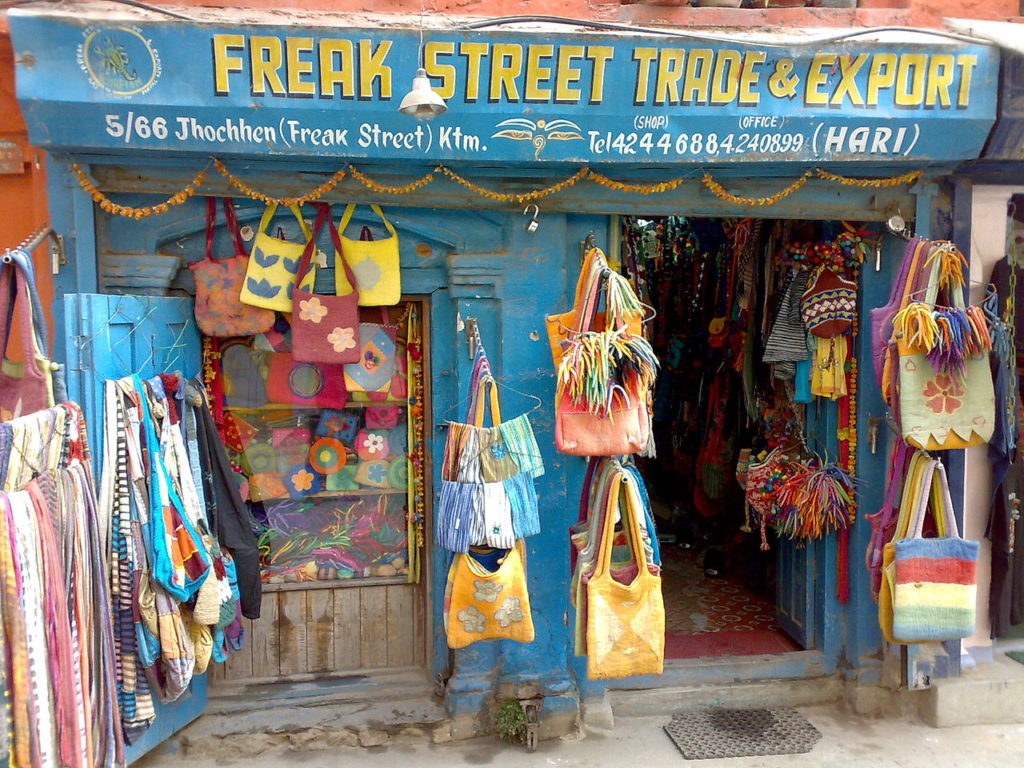Cannabis could soon be relegalized in Nepal, with the county’s MPs now eyeing a return to the more liberal drug policies that made the country a hotspot for hippies seeking man-made havens back in the 1960s and early 1970s. This would put an end to a US-imposed “War on Drugs” era that proved devastating for local traditions, as well as tourism and economic development in the county.
Nepal, Hippy Hotspot of the 60s and 70s, Plans to Relaunch Its “Ganja”


Half a century ago, thousands of young, long-haired, mostly Western backpackers thronged Kathmandu, Nepal. They flocked to sample the potent strains of cannabis and hashish offered in government-licensed shops on Jhochhen Tole, which is known as “Freak Street” in English, named in reference to the hippies.
The war on drugs that Washington waged around the world, accompanied by pressure on foreign governments, led to the closure of dispensaries in Nepal in 1973, along with the prohibition of cannabis cultivation. This forced farmers to destroy their plantations.
But now, as Western countries relax their own cannabis laws, the Nepalese government and advocates of law reform believe it’s time to stop criminalizing its production, which is deeply rooted in cultural and religious practices in Nepal.
The People Punished
“It is not justifiable that a poor country like Nepal should treat cannabis as a drug,” said Nepalese Health Minister Birodh Khatiwada. Khatiwada sponsored Nepal’s first parliamentary motion advocating an end to the ban back in January 2020.
Two months later, a bill was submitted to MPs asking for partial legalization. However, a change of government stalled the process.
“Our people are being punished… and corruption is increasing because of smuggling, because we follow the decisions of developed countries who do what they want,” said Mr. Khatiwada.
In December 2020, Nepal successfully supported a campaign with the United Nations to remove cannabis from its list of the world’s most harmful drugs.
Nepal Is Studying the Medical Benefits of Cannabis
Nepal’s Ministry of Interior has since launched a study on the medicinal properties and export potential of cannabis. It is believed this will add additional weight to the arguments for lifting the band during parliamentary debates.
“It’s medicine,” says Rajiv Kafle, an HIV patient who campaigns for the legalization of cannabis. According to him, allowing it again would give a “significant boost” to Nepal’s tourism industry, which was knocked out by the Covid pandemic. It would also benefit Nepalese suffering from chronic illnesses.
While current law allows medical cannabis, there is no established framework for therapeutic use and the government still enforces a blanket ban on consumption and trafficking. “So many patients use it, but they are forced to do it illegally”, regrets Kafle. “They can get caught at any time.”
Cannabis Tourism in Nepal Is Unofficially Tolerated
In practice, a tourist is unlikely to be prosecuted for smoking a joint on the streets of Kathmandu. The authorities also look away at the time of the annual festival in honor of the Hindu god Shiva, often equipped with a chillum, a kind of pipe used by sadhus to smoke cannabis.
The scent of “ganja” floats around the Pashupatinath temple in Kathmandu where these holy men of Nepal gather to celebrate the “gift” of Shiva with the faithful, also equipped with pipes.
But elsewhere, the sanctions are applied with severity. Cannabis traffickers in Nepal face up to ten years in prison, and police seize and destroy thousands of cannabis plants across the country each year.
Cannabis Ban Disrupted Nepalese Traditions
The ban interrupted a long tradition of using cannabis, which grew wild in Nepal, to produce fiber, Ayurvedic medicine, and food.
“The ban has destroyed an important source of income in this region,” a farmer in the western district of Dang told AFP. “We ignored how much it was part of our culture and our daily life, not just as an intoxicant.”
Several Western countries have ended their own bans on cannabis in recent years, including parts of the United States, such as California where a strain originating in Nepal is sold under the brand “Himalayan Gold”.
For Barry Bialek, a doctor at a cannabis research center at the University of Kathmandu, the labeled trade in Nepalese marijuana could prove very lucrative locally and “benefit the global market.”
__
(Featured image by Holynow (CC BY-SA 3.0) via Wikimedia Commons)
DISCLAIMER: This article was written by a third-party contributor and does not reflect the opinion of Hemp.im, its management, staff, or its associates. Please review our disclaimer for more information.
This article may include forward-looking statements. These forward-looking statements generally are identified by the words “believe,” “project,” “estimate,” “become,” “plan,” “will,” and similar expressions. These forward-looking statements involve known and unknown risks as well as uncertainties, including those discussed in the following cautionary statements and elsewhere in this article and on this site. Although the Company may believe that its expectations are based on reasonable assumptions, the actual results that the Company may achieve may differ materially from any forward-looking statements, which reflect the opinions of the management of the Company only as of the date hereof. Additionally, please make sure to read these important disclosures.
First published by La Nouvelle République, a third-party contributor translated and adapted the article from the original. In case of discrepancy, the original will prevail.
Although we made reasonable efforts to provide accurate translations, some parts may be incorrect. Hemp.im assumes no responsibility for errors, omissions, or ambiguities in the translations provided on this website. Any person or entity relying on translated content does so at their own risk. Hemp.im is not responsible for losses caused by such reliance on the accuracy or reliability of translated information. If you wish to report an error or inaccuracy in the translation, we encourage you to contact us.



Comments are closed for this post.